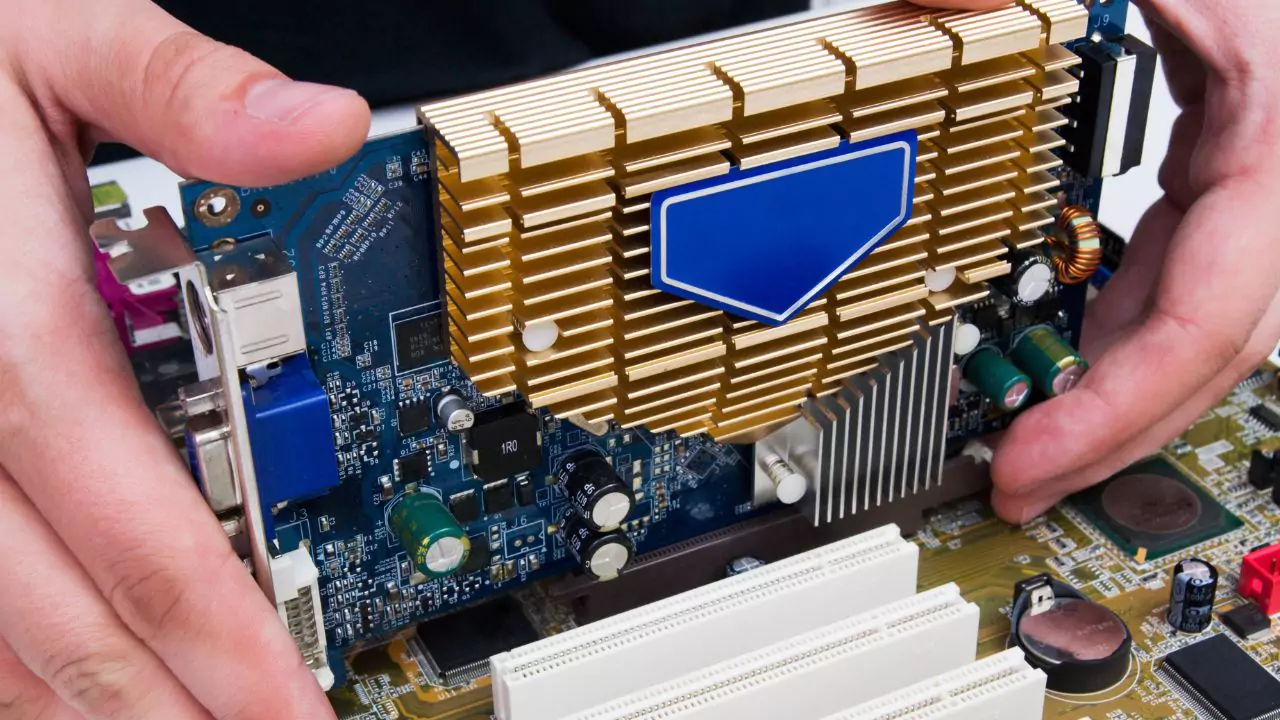Yes. It’s possible to install a new GPU into an older motherboard as long as the motherboard has compatible slots and power connectors. However, it’s important to be aware that there may be limitations in performance and features due to the older technology of the motherboard. It’s advisable to carefully assess compatibility and upgrade options before proceeding with the installation.
Factors for GPU-Motherboard Compatibility
There are four main factors to consider when determining GPU-motherboard compatibility:
- PCIe Slot Version: This refers to the type of expansion slot on the motherboard used to connect the GPU. Newer GPUs typically require newer PCIe versions (e.g., PCIe 4.0) for optimal performance. While most motherboards are backward compatible with older PCIe versions (e.g., a PCIe 4.0 GPU can work in a PCIe 3.0 slot), the performance might be limited.
- Form Factor: The physical size and layout of the motherboard and GPU need to be compatible. Common form factors include ATX, micro ATX, and mini ITX. Ensure your chosen GPU physically fits within your case and has compatible mounting points on the motherboard.
- Power Supply: New GPUs can have significant power requirements. Check the power supply unit (PSU) wattage and ensure it can deliver enough power to the GPU, alongside other components in your system. Upgrading the PSU might be necessary if it’s insufficient.
- BIOS Support: The motherboard’s BIOS (Basic Input/Output System) needs to recognize and support the new GPU. Manufacturers often release BIOS updates to ensure compatibility with newer hardware. Check your motherboard manufacturer’s website for updates before installing a new GPU.
Compatibility of Graphics Cards with Old Motherboards
The Role of GPU Brand: While brand generally doesn’t affect compatibility, keep in mind that different brands might offer slightly different features or require specific software.
General Compatibility Factors: Newer high-end GPUs might require features or functionalities not present on older motherboards, even if they meet the basic compatibility criteria. Research the specific GPU you’re interested in and compare its requirements with your motherboard’s specifications.
Brand-specific Considerations: Some manufacturers, like NVIDIA, offer tools or resources to help users check compatibility between their GPUs and motherboards. Consult the manufacturer’s website for such resources.
Upgrading to a New Graphics Card on an Old Motherboard
Steps to Take Before Upgrading:
- Research Your Motherboard: Identify the specific model and its specifications, including the PCIe slot version, form factor, and BIOS version.
- Research the Desired GPU: Check its technical specifications, including power requirements, form factor, and any specific compatibility notes.
- Verify Compatibility: Using the information gathered, ensure your motherboard meets the essential compatibility requirements for the chosen GPU. Online tools or manufacturer websites can help with this process.
Potential Issues and Solutions:
- Performance Bottleneck: An older motherboard might limit the performance of a newer, more powerful GPU. Upgrading the CPU or other components might be necessary to unlock the full potential of the new GPU.
- Outdated Features: Newer GPUs might have features not supported by older motherboards. This could limit functionality or performance.
- Driver Compatibility: Ensure that compatible drivers are available for the new GPU and your operating system.
Recommendations for a Smooth Upgrade:
- Prioritize Compatibility: Double-check compatibility before purchasing a new GPU to avoid potential issues.
- Consider a Balanced Upgrade: If your motherboard significantly limits the new GPU’s potential, consider upgrading the CPU or other components for a more balanced system.
- Manage Expectations: Understand that using a new GPU on an older motherboard might not deliver the full performance you expect.
Upgrading a GPU on an old motherboard can be a cost-effective way to improve your system’s graphics performance. However, carefully consider compatibility and potential limitations before making the purchase. By following these steps and recommendations, you can ensure a smooth and successful upgrade experience.







